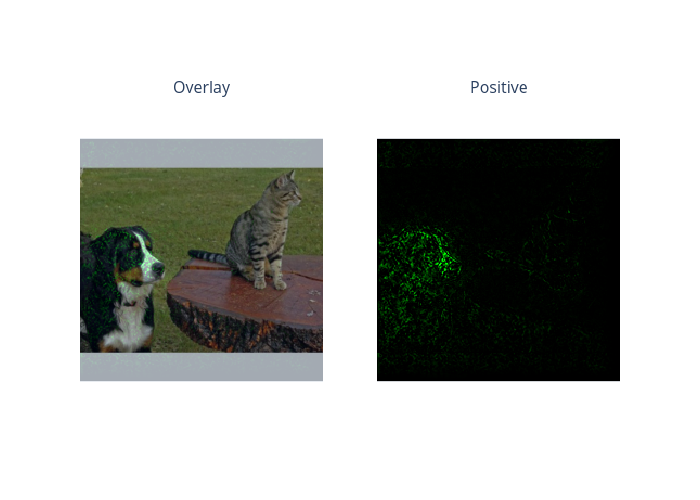Integrated-gradient for image classification (PyTorch)
This is an example of the integrated-gradient method on image classification with a PyTorch model. If using this explainer, please cite the original work: https://github.com/ankurtaly/Integrated-Gradients.
[1]:
# This default renderer is used for sphinx docs only. Please delete this cell in IPython.
import plotly.io as pio
pio.renderers.default = "png"
[2]:
import json
import torch
from torchvision import models, transforms
from PIL import Image as PilImage
from omnixai.data.image import Image
from omnixai.explainers.vision import IntegratedGradientImage
We recommend using Image to represent a batch of images. Image can be constructed from a numpy array or a Pillow image. The following code loads one test image and the class names on ImageNet.
[3]:
# Load the test image
img = Image(PilImage.open('../data/images/dog_cat.png').convert('RGB'))
# Load the class names
with open('../data/images/imagenet_class_index.json', 'r') as read_file:
class_idx = json.load(read_file)
idx2label = [class_idx[str(k)][1] for k in range(len(class_idx))]
The model considered here is a ResNet model pretrained on ImageNet. The preprocessing function takes an Image instance as its input and outputs the processed features that the ML model consumes. In this example, the Image object is converted into a torch tensor via the defined transform.
[4]:
device = "cuda" if torch.cuda.is_available() else "cpu"
model = models.inception_v3(pretrained=True).to(device)
transform = transforms.Compose([
transforms.Resize((256, 256)),
transforms.CenterCrop(224),
transforms.ToTensor(),
transforms.Normalize(mean=[0.485, 0.456, 0.406], std=[0.229, 0.224, 0.225])
])
preprocess = lambda ims: torch.stack([transform(im.to_pil()) for im in ims])
To initialize IntegratedGradientImage, we need to set the following parameters:
model: The ML model to explain, e.g.,tf.keras.Modelortorch.nn.Module.preprocess: The preprocessing function converting the raw data (aImageinstance) into the inputs ofmodel.mode: The task type, e.g., “classification” or “regression”.
[5]:
explainer = IntegratedGradientImage(
model=model,
preprocess_function=preprocess
)
# Explain the top label
explanations = explainer.explain(img)
explanations.ipython_plot(index=0, class_names=idx2label)
